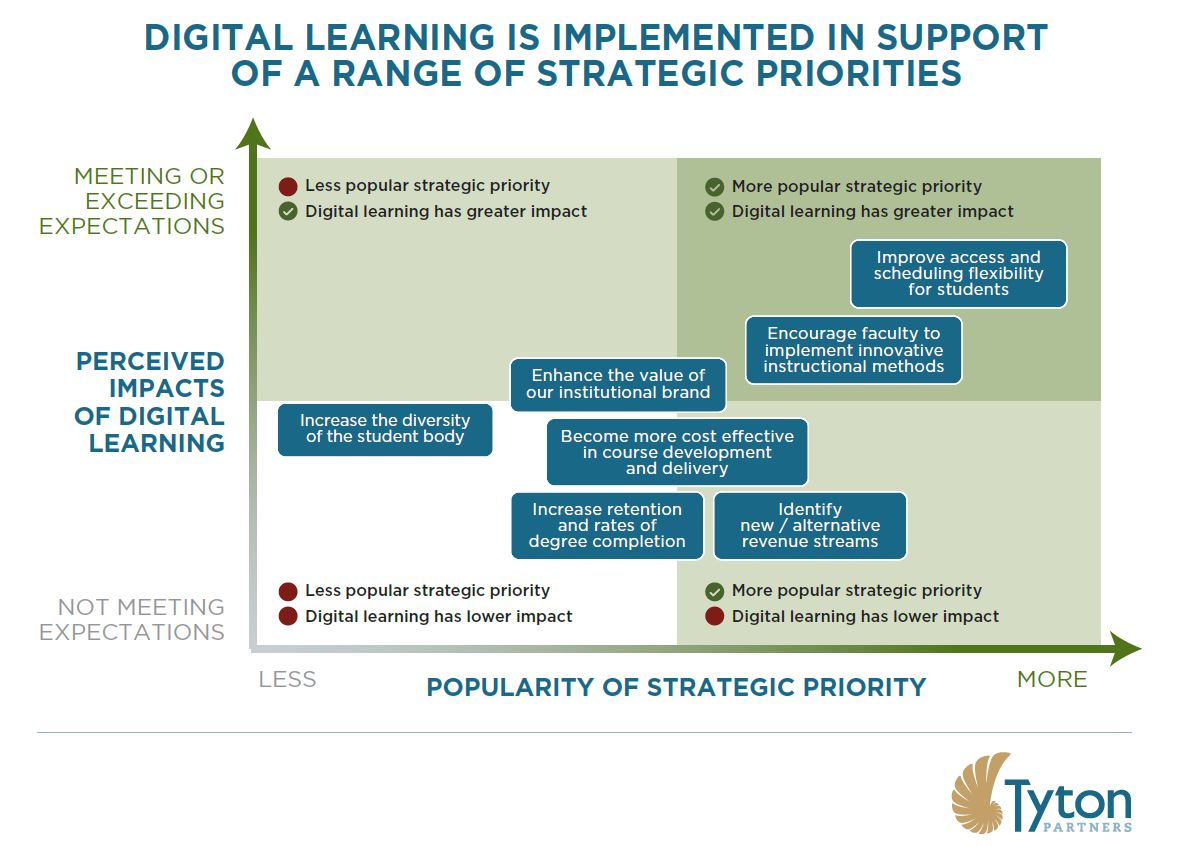Catalytic Capital: From Recognition to Action in Education-to-Workforce Investing
July 8, 2025 BlogThe education-to-workforce pipeline is under pressure – and changing fast. The World Economic Forum notes that employers around…
The Bottom Line
The impact and efficacy of digital learning is being vigorously debated. The challenge is that digital learning is used to support a range of strategic priorities across postsecondary institutions. Administrators report that its greatest impact is on improving scheduling flexibility and access for students. When executed well, this enables higher graduation rates. Is digital learning meeting expectations at your institution? Is your digital learning product designed to support the strategic goals of postsecondary institutions?
 Our fall 2016 survey of more than 1,100 administrators across U.S. postsecondary institutions shows that digital learning is viewed as a strategic lever to help institutions achieve their goals. Administrators report that digital learning is being implemented to achieve strategic priorities in academic areas, including improving scheduling flexibility, encouraging innovation in instruction and increasing completions and retention, as well as in financial areas, such as reducing the cost of course development and delivery and generating new revenue streams.
Our fall 2016 survey of more than 1,100 administrators across U.S. postsecondary institutions shows that digital learning is viewed as a strategic lever to help institutions achieve their goals. Administrators report that digital learning is being implemented to achieve strategic priorities in academic areas, including improving scheduling flexibility, encouraging innovation in instruction and increasing completions and retention, as well as in financial areas, such as reducing the cost of course development and delivery and generating new revenue streams.
Relative to expectations, administrators share that digital learning has had the greatest impact on improving scheduling flexibility and access for students, with about two-thirds of administrators reporting that the impacts of digital learning met or exceeded expectations. The progress reported against other goals is less significant, with less than half of administrators reporting that digital learning has met their expectations in reducing costs or driving new revenues.
The Takeaways
For Institutions: Digital learning isn’t a cure all and it’s important to be clear on your institutional goals for implementation to achieve success. In order to identify and evaluate the impacts of digital learning, institutions should articulate how digital learning supports their strategic priorities and set realistic expectations for digital learning’s impacts as part of a comprehensive strategic planning process.
For Digital Learning Suppliers: Communicating how your product supports institutions in achieving their strategic priorities will enable more successful sales conversations and help institutions make better digital learning implementation decisions. In order to better support institutions to accomplish their goals, product suppliers should understand the strategic priorities of their institutional partners and share information on how and why their products may or may not support achievement of those strategic priorities.
Has digital learning met expectations at your institution? Does your digital learning product deliver impact? We want to hear from you about your experiences and share additional data and insights from our fall 2016 survey. Click here to contact our team to schedule a conversation on digital learning trends, best practices in scaling digital learning, and the implications for your strategy.
Tyton Partners tracks the evolution of the digital learning market and has published key findings in its series “Time for Class”. First published in 2015, the series will be updated with insights from a Fall 2016 survey of postsecondary faculty and administrators in May 2017.